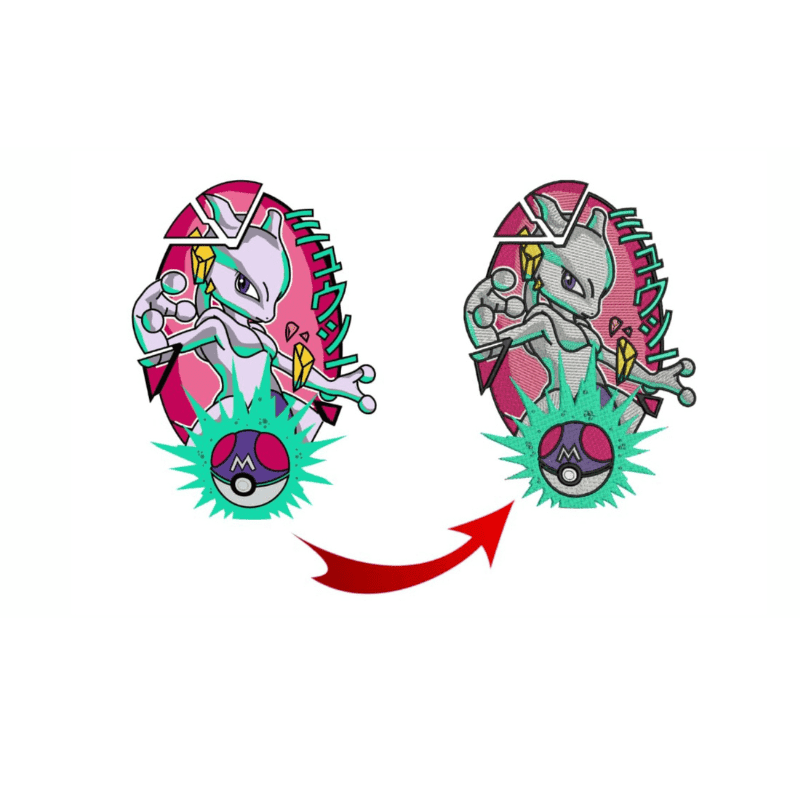Reliable Digitizing for Embroidery: Quick Turn-around
Reliable Digitizing for Embroidery: Quick Turn-around
Blog Article
Simplifying the Art of Needlework Digitizing: Step-by-Step Overview
As modern technology continues to development, the digitization process has actually ended up being extra easily accessible, allowing fanatics to bring their elaborate layouts to life with ease. In this overview, we will certainly decipher the intricacies of embroidery digitizing, damaging down each action systematically to enhance the process and encourage both beginners and experienced embroiderers alike.
Understanding Embroidery Digitizing Software Program
Embroidery digitizing software application acts as an important device for transforming complex layouts into digital layouts suitable with embroidery machines, assisting in precise stitching and modification. This specialized software application enables customers to import various image data layouts, such as JPG or PNG, and convert them into embroidery machine-readable layouts like DST, EXP, or PES - Digitizing for Embroidery. By making use of features like stitch modifying, padding alternatives, and string shade option, digitizing software makes it possible for individuals to manage every facet of the design process
Furthermore, progressed needlework digitizing software program supplies devices for creating complicated layouts, readjusting stitch thickness, and incorporating elaborate details. Individuals can likewise sneak peek the style prior to sewing it out, ensuring accuracy and reducing errors. Furthermore, lots of software application supply automated attributes that aid streamline the digitizing process, conserving effort and time.
Recognizing the capacities of needlework digitizing software is necessary for accomplishing high-grade results in embroidery tasks. By understanding this device, embroidery enthusiasts and professionals can release their creativity and bring intricate layouts to life with accuracy and effectiveness.

Choosing the Right Style Data
After familiarizing yourself with the capabilities of needlework digitizing software program, the following vital action in the process is picking the right style apply for your project. Digitizing for Embroidery. When choosing a design file for needlework digitizing, it's vital to think about the complexity of the style, the dimension of the end product, and the sort of fabric you will be collaborating with
For elaborate designs with fine information, a high-resolution photo or vector data is recommended to make certain that the needlework maker can accurately duplicate the layout. Furthermore, the size of the end product plays a significant role in picking the best style data. Larger designs might call for greater resolution files to preserve quality and intensity.
Additionally, the sort of textile you will certainly be embroidering on affects the selection of style documents. Different fabrics may require adjustments in the design documents to ensure that the stitches are correctly lined up and the layout looks like meant. By carefully choosing the appropriate style file based on these factors, you can establish yourself up for an effective embroidery digitizing process.
Digitizing Devices and Techniques
Making use of specialized software and precision methods, digitizing tools are essential in changing complex layouts into embroidery-ready data. Needlework digitizing software application, such as Wilcom, Hatch, or Embrilliance, provides the needed system to transform artwork right into stitch data. These programs additional info supply functions like stitch editing, rug options, and text tools to ensure the style translates seamlessly onto fabric.
Among the key techniques in digitizing is creating a clear course for the needlework machine to adhere to. This includes digitizing each aspect of the design with precision, figuring out stitch types, densities, and instructions. By utilizing devices like digitizing tablets or software-specific plugins, embroiderers can achieve a high degree of accuracy in their digitized styles.
Furthermore, mastering the art of rug sewing is critical for creating high quality needlework. Underlay stitching supports the fabric and produces a foundation for the style, making certain that the final item is both visually attractive and resilient. By comprehending these digitizing devices and strategies, embroiderers can raise their craft and bring complex designs to life with precision and performance.
Personalizing Stitch Kinds and Instructions
The choice of stitch types can dramatically impact the overall appearance and appearance of the embroidered layout. By purposefully integrating these stitch kinds, embroiderers can achieve deepness and measurement in their styles.
Furthermore, the direction of stitches plays a crucial duty in boosting the aesthetic allure of the final embroidery. Numerous stitch directions can add texture, emphasize details aspects, and develop aesthetic rate of interest. For circumstances, altering the angle of stitches can simulate motion or all-natural patterns like fur or feathers. By explore different helpful hints stitch angles and patterns, embroiderers can bring their designs to life with remarkable detail and intricacy. Understanding the art of customizing stitch types and directions equips embroiderers to unleash their imagination and boost the high quality of their job.
Testing and Refining Your Digitized Style
To guarantee the precision and high quality of your digitized design, detailed testing and improvement are crucial steps in the embroidery digitizing procedure. As soon as you have try this website actually finished the digitization of your layout, it is essential to evaluate it before waging the actual embroidery. Checking enables you to recognize any type of prospective problems such as string breaks, sew density troubles, or style distortions that might affect the outcome.

After testing, it is necessary to refine your digitized style based upon the comments from the examination sew-out. This may involve tweaking sew setups, changing densities, or making modifications to the general style to attain the wanted outcome. By repeating through screening and improvement, you can adjust your digitized layout to excellence before progressing with the real needlework procedure.
Final Thought
Finally, grasping the art of embroidery digitizing requires a detailed understanding of the software application, picking the appropriate design documents, making use of digitizing tools and methods, personalizing stitch types and instructions, and testing and fine-tuning the digitized layout. By adhering to these steps, embroiderers can simplify the digitizing procedure and develop high-grade embroidered layouts with precision and efficiency.
Report this page